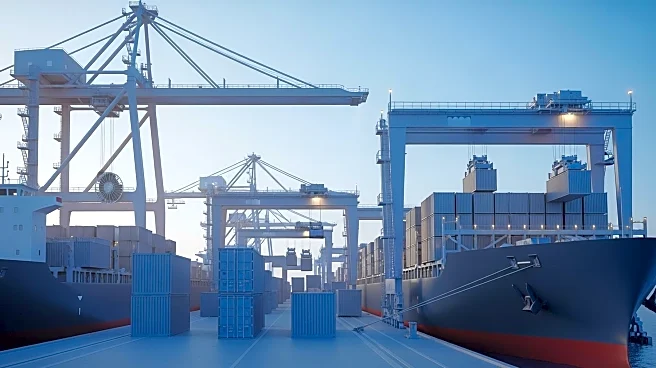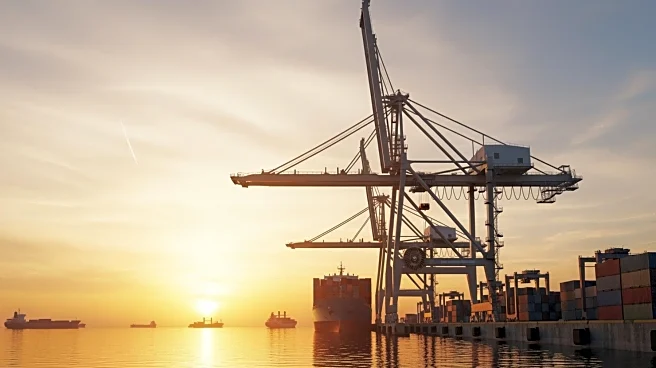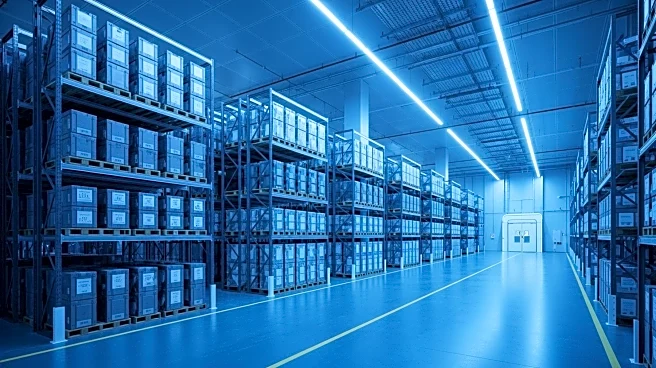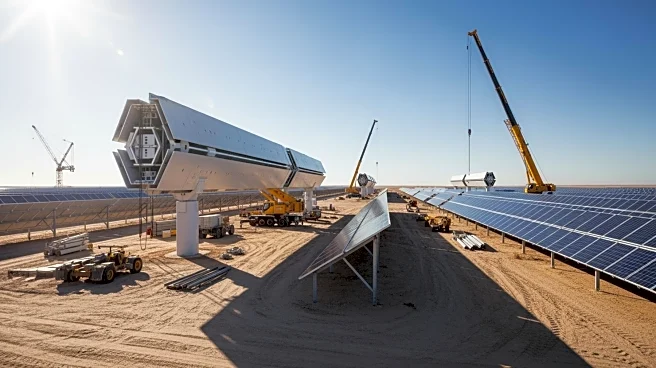What's Happening?
The Panama Canal has initiated a consultation process with key maritime industry representatives to explore partnerships for developing new port terminals on both the Atlantic and Pacific sides of the canal.
This initiative aims to enhance the canal's infrastructure, following a similar approach used in previous projects like the gas pipeline. The meeting, held by invitation only, included major players such as APM Terminals, DP World, and Maersk Line, among others. The process will involve a market and feasibility study, leading to a competitive selection of a concessionaire by the fourth quarter of 2026. The development is part of the Panama Canal's strategic vision for 2025-2035, focusing on expanding port capacity and maintaining the canal's competitive edge.
Why It's Important?
The development of new port terminals at the Panama Canal is significant for global shipping and trade. By increasing container transshipment capacity by 5 million TEUs annually, the project aims to bolster Panama's status as a leading intermodal hub. This expansion is crucial as current port capacities are nearing their limits. The initiative is expected to generate substantial economic benefits, including an estimated investment of USD 2.6 million and a potential GDP impact of 0.4% to 0.8% for Panama. Additionally, the project is projected to create approximately 8,100 jobs during construction and 9,000 jobs once operational, contributing to both direct and indirect employment in the region.
What's Next?
The next steps involve conducting a market and feasibility study for the proposed terminals, followed by the development of a general project plan. The selection process for a concessionaire will include a prequalification phase, interaction with prequalified participants, and a final selection stage. This transparent and competitive process is expected to attract participation from leading global companies, with the final selection anticipated by late 2026. The successful implementation of this project will be pivotal in maintaining the Panama Canal's role as a critical node in global maritime logistics.
Beyond the Headlines
The expansion of port terminals at the Panama Canal could have broader implications for global trade routes and shipping logistics. By enhancing its capacity, the canal may influence shipping patterns, potentially reducing congestion at other major ports. This development also underscores the importance of strategic infrastructure investments in maintaining competitive advantages in global trade. Furthermore, the project's focus on sustainability and efficiency aligns with broader industry trends towards decarbonization and environmental responsibility.












